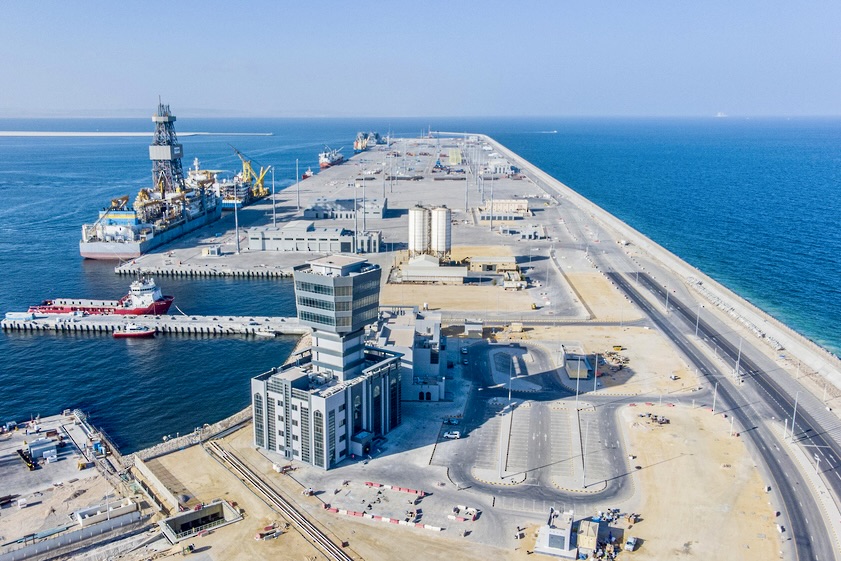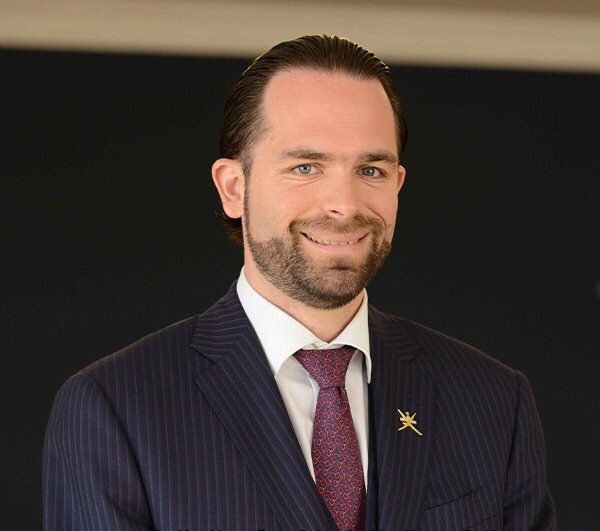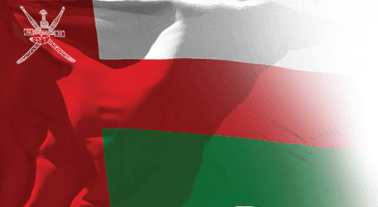
Duqm Port: a vital corridor to the Special Economic Zone
The Port of Duqm is one of the most important development projects in the Special Economic Zone in Duqm (SEZAD). Its strategic location on international shipping lines links three continents – Asia, Africa, and Europe – and gives it a competitive advantage by being close to large emerging markets in Africa, India, and the GCC countries.
The Port of Duqm is operated and managed by the Port of Duqm Company, a 50-50 joint venture between the ASYAD Group and the Antwerp Port Consortium. It serves various economic and commercial sectors in Oman and regional and global markets.
The port features three main berths: the commercial berth, the government berth, and the liquid and bulk materials berth. It has an advanced infrastructure with a total breakwater length of 8.7 kilometers, a basin depth of 18 meters and an entry channel of 19 meters which means it can receive and handle giant container ships.
The Duqm Port Company and its subsidiaries are also promoting 5,000 hectares of leasable areas within the port’s industrial and logistics within the SEZAD in accordance with the concession contract signed between the two parties.
The port offers many competitive business incentives to make it a multi-purpose global trade gateway to reach various markets. ASYAD Duqm Terminals, which was established in partnership between ASYAD Ports and Duqm Port Company, began managing and operating the general cargo terminal which includes the three commercial berths.
To enhance the integrity of the infrastructure, new container cranes began operating in 2023 after the completion of the project by the Public Authority for Special Economic Zones and Free Zones (OPAZ). The move is a qualitative step to develop the port’s capabilities and improve its efficiency. The Duqm Port Company has worked extensively with OPAZ to complete the project in accordance with international specifications.
The new cranes feature high, smart and fast capabilities to handle containers. They have been equipped with fifth-generation technologies in addition to a fibre-optic data transmission system controlled remotely by the crane operator. The cranes are equipped with intelligent driving systems, a yard monitoring system and an automatic landing system. They can handle the largest container vessels in the world.
The 16 new cranes are made up of four for transporting containers from ships to the commercial berth, with a capacity of up to 65 tons, and 12 gantry cranes with rubber tires with a carrying capacity of 41 tons. The government berth at Duqm Port is the first to be built for government agencies in Omani ports.
The 980 meter-long berth is located between the dry dock and the liquid and bulk berth close to the commercial berth. It is one of the most important security facilities in the Port of Duqm and is ready to manage logistical operations for a number of government agencies.
In 2019, the superstructure of the government pier was completed. It includes buildings for a number of government agencies, employee housing, and administrative offices, with workshops for maintaining boats, equipment for ships and boats and areas for logistical services. The project also included extending electricity, water, communications, sewage and firefighting networks, constructing four pumps, surface water drainage channels, water tanks, fencing at the government dock and constructing the main gates and security gates.
The government sidewalk is about 2 kilometers long and 7 meters wide. It includes main and internal roads with lighting, traffic lights and parking for vehicles of various types.
The liquid and bulk materials berth at Duqm Port is a major development that will transform Duqm into a city exporting oil derivatives and green industries. It was constructed in two stages, the first completed in 2019 and the second in the second quarter of 2020.
During the first phase of the pier’s infrastructure work, 79 hectares of the area adjacent to the 4.6 km long breakwater were developed and reclaimed for the construction of the liquid and bulk pier. The double dock berth was also constructed with accessories and marine navigation tools.
About 26 million cubic meters of materials were excavated for the work of deepening the basin to 18 meters and deepening the channel that leads to the dock to reach 19 meters. About five million cubic meters of this material was used for reclamation and backfilling. A one-kilometer pier wall was constructed and buoys and navigational aids were installed.
The second phase included increasing pier reclamation operations to 55 hectares of the area next to the breakwater which made the pier ready for new companies to operate.
During 2019, the Duqm Port Company delivered the first phase to the Duqm Refinery Company which worked on constructing its export facilities and establishing tanks, buildings and services for the export of petroleum derivatives.
Reggy Vermeulen, CEO of the Port of Duqm, said the port played an active role in developing the cargo base it deals with especially the handling of containers related to the fish sector, including frozen and dry products. He said the port had succeeded in increasing the handling of general containers and the amount of various metal exports.
In a statement to Oman News Agency, he said the port had attracted new investors especially in the fields related to green hydrogen and green iron, noting that there were new investments in the container terminal including new warehouses and offices, cranes and other supporting equipment.
The Duqm Port administration wants the port to become a leading maritime and logistical hub in the region. Its strategic location, world-class infrastructure and focus on sustainable development has attracted large investments. In early 2023, the port signed industrial land reservation agreements with many leading companies in the field of green iron and green hydrogen.
The Port of Duqm seeks to attract green hydrogen projects that use clean energy sources and adopt a comprehensive and proactive approach to environmental sustainability including decarbonization and a commitment to zero neutrality.



Follow us